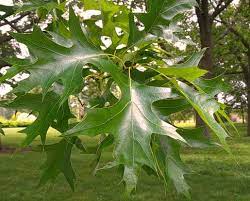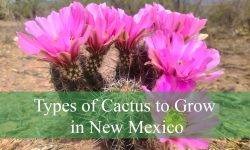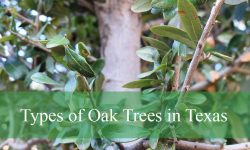California is home to diverse oak trees, each with unique characteristics and contributions to the state’s ecosystems. From the iconic coast live oak to the majestic valley oak, these trees play a crucial role in supporting wildlife habitats, providing shade, and preserving the natural beauty of the Golden State.
In this article, we will explore some of California’s most prominent types of oak trees, shedding light on their distinguishing features and ecological significance. Whether you’re a nature enthusiast, a curious observer, or a budding arborist, join us as we delve into the captivating world of California’s oak trees.
Different Types of California Oak Trees
Distinguishing between different kinds of California oak trees can be a daunting experience for beginners due to their close similarities. Here is a comprehensive California oak tree identification guide:
Pin Oak (Quercus palustris)

It is a majestic deciduous tree native to the eastern United States, including parts of California. Known for its tall stature and striking appearance, this oak species is highly valued for its ornamental qualities. The Pin Oak features a distinct pyramidal shape when young, gradually transforming into a more rounded crown with age. Its glossy green leaves, deeply lobed with pointed tips, turn vibrant shades of red and bronze in the fall, adding a splash of color to the landscape.
One of the distinguishing features of the Pin Oak is its characteristic pin-like or bristle-tipped branches, from which it derives its name. These branches, along with the tree’s dense foliage, create an appealing silhouette throughout the year. The bark of the Pin Oak is dark gray and develops shallow furrows and ridges as the tree matures.
The Pin Oak thrives in wet or poorly drained soils, often found near streams, swamps, and floodplains. It is highly adaptable and can tolerate a wide range of soil types, including clay and loam. This adaptability, combined with its moderate growth rate, makes Pin Oak a popular choice for landscaping projects, parks, and large gardens.
The Pin Oak also provides several ecological benefits. Its dense foliage offers excellent shade, which can help cool urban areas during hot summers. The tree’s acorns serve as a food source for various wildlife, including squirrels, deer, and birds. Additionally, the deep root system of the Pin Oak helps stabilize soil, preventing erosion and improving water quality.
It is a striking oak species renowned for its attractive appearance, adaptability, and ecological contributions. Whether as a focal point in a landscape or a shade provider in urban environments, this tree adds beauty and benefits to its surroundings, making it a cherished presence wherever it grows.
Santa Cruz Island Oak (Quercus parvula)
It is a species of oak tree native to Santa Cruz Island, which is located off the coast of Southern California, USA. It is a small to medium-sized tree that typically grows up to 30 feet in height. The oak has distinctive lobed leaves with a dark green color, providing an attractive appearance.
It is well-adapted to the Mediterranean climate of the region, with hot, dry summers and mild, wet winters. The Santa Cruz Island Oak plays an important ecological role by providing habitat and food for various wildlife species, including birds and mammals.
But it faces conservation concerns due to habitat loss and invasive species. Efforts are being made to protect and restore the population of this unique oak species.
Engelmann Oak (Quercus engelmannii)
It is a species of oak tree native to Southern California and northern Baja California. It is named after George Engelmann, a 19th-century American botanist. The tree is known for its stately appearance, with a broad canopy and a sturdy trunk that can reach heights of up to 80 feet (24 meters).
Engelmann Oaks have distinctive dark green, leathery leaves with smooth edges. The leaves are oval-shaped and can grow up to 4 inches (10 centimeters) long. The tree produces acorns that are a valuable food source for various wildlife, including squirrels, birds, and deer.
This oak species is well-adapted to the Mediterranean climate of its native range, tolerating both drought and occasional winter rains. It typically grows in rocky canyons and foothills, often found in association with chaparral and coastal sage scrub ecosystems.
Engelmann Oaks play an important ecological role by providing habitat and food for numerous animal species. They also contribute to the overall biodiversity and stability of the ecosystems they inhabit. However, like many oak species, they are threatened by urbanization, habitat fragmentation, and diseases such as sudden oak death.
Efforts are underway to conserve and protect the Engelmann Oak and its habitat through various conservation initiatives and land management strategies. These conservation efforts aim to ensure the long-term survival of this iconic oak species and the ecosystems it supports.
California Scrub Oak (Quercus berberidifolia)
It is a small, evergreen oak species native to California, United States. It typically grows in chaparral and coastal sage scrub habitats, often in dry and rocky areas. This oak species is known for its compact size, reaching an average height of 6 to 10 feet (1.8 to 3 meters).
The leaves of the California Scrub Oak are leathery, dark green, and spiny-edged, resembling holly leaves. They are an adaptation to the dry and harsh conditions of its environment. During late spring and summer, the tree produces small inconspicuous flowers that are wind-pollinated.
The California Scrub Oak plays a crucial role in its ecosystem, providing food and habitat for various wildlife species. Its acorns are an important food source for birds, small mammals, and insects. Additionally, the dense foliage offers shelter and nesting sites for birds and provides cover for small animals.
While the California Scrub Oak is well adapted to Mediterranean climates, it can be challenging to cultivate in gardens due to its specific habitat requirements and slow growth rate. However, it is valued in landscaping for its attractive evergreen foliage and ability to withstand drought conditions.
The California Scrub Oak is a resilient and ecologically significant species, contributing to the biodiversity and beauty of California’s natural landscapes.
Oregon Oak (Quercus garryana)
It is a species of oak tree native to the western United States, particularly in the Pacific Northwest region, including Oregon. It is known for its strength, durability, and distinctive aesthetic qualities. The tree can reach heights of up to 100 feet (30 meters) and has a broad, spreading crown.
Oregon Oak is highly adaptable and can grow in a variety of habitats, including both moist valleys and dry upland areas. Its leaves are deciduous, with lobed edges, and turn a beautiful reddish-brown in the fall. The tree produces acorns that are an important food source for various wildlife species.
Due to its slow growth and limited distribution, Oregon Oak has become a symbol of conservation and is valued for its ecological importance and the unique character it lends to the landscapes it inhabits.
Canyon Live Oak (Quercus chrysolepis)
It is a species of oak tree native to western North America. It is known for its ability to thrive in rugged, canyon environments, hence its name. Canyon Live Oak typically has a broad, rounded crown and can reach heights of up to 60 feet (18 meters).
The leaves are dark green and leathery, with wavy or toothed margins. The tree produces small acorns that are an important food source for various wildlife species.
It is highly adaptable and can tolerate a range of soil conditions, including rocky and dry soils. It plays a vital role in the ecosystems it inhabits, providing habitat and food for numerous animal species.
Channel Island Oak (Quercus tomentella)
It is a species of oak tree native to the Channel Islands of California. It is a medium-sized evergreen tree with a dense crown and a rounded shape.
The leaves of the Channel Island Oak are dark green and have a fuzzy texture on the underside, which gives the tree its scientific name “tomentella,” meaning “covered with fuzz.”
The tree produces acorns which are an important food source for wildlife. Channel Island Oak is well-adapted to the coastal environment and can tolerate salty winds and sandy soils.
Due to habitat loss and invasive species, the Channel Island Oak is considered endangered and efforts are being made to protect and preserve this unique species.
California Black Oak (Quercus kelloggii)
It is a species of oak tree native to California, United States. It is known for its distinctive blackish bark and a broad, spreading canopy. The tree can reach heights of up to 80 feet (24 meters) and has large, lobed leaves that turn golden-yellow in the fall.
California Black Oak is an important component of California’s oak woodlands and provides habitat for various wildlife species. It is also valued for its durable wood, which is used for furniture, flooring, and other applications.
The species has adapted to California’s Mediterranean climate and is able to tolerate both drought conditions and occasional wildfires. The California Black Oak faces threats from habitat loss and the encroachment of non-native species. Conservation efforts are underway to protect and restore its populations.
Blue Oak (Quercus douglasii)
It is a native oak tree species found primarily in California, United States. It is known for its distinctive blue-gray foliage and rugged, picturesque appearance. It reaches heights of 20 to 60 feet and have a wide, spreading canopy that provides ample shade.
They are well-adapted to the Mediterranean climate of California, tolerating hot, dry summers and cool, wet winters. Blue Oaks play a crucial ecological role by providing habitat and food for numerous wildlife species.
They also have cultural significance and historical importance in the region. Conservation efforts are underway to preserve and protect this iconic oak species.
California Live Oak (Quercus agrifolia)
It is a prominent tree species native to California, USA. It is characterized by its majestic stature, reaching heights of up to 80 feet (24 meters) and possessing a broad, spreading crown. The leaves of the Live Oak are dark green, and leathery, and persist throughout the year, providing the tree with an evergreen appearance.
Known for its resilience and adaptability, the California Live Oak thrives in a variety of habitats, from coastal regions to inland valleys and foothills. It is particularly well-suited to California’s Mediterranean climate, with its hot, dry summers and mild, wet winters.
The Live Oak plays a crucial role in the ecosystem by providing habitat, shade, and food for numerous organisms. Its acorns serve as a vital food source for various wildlife, including birds, squirrels, and deer.
Due to its aesthetic appeal and cultural significance, the California Live Oak is often treasured as an ornamental tree in parks, gardens, and residential landscapes. It’s sprawling branches and wide canopy create a shaded oasis, making it a preferred choice for outdoor gatherings and recreational activities.
Interior Live Oak (Quercus wislizenii)
It is a species of oak tree native to California and Oregon in the United States. It is a medium-sized evergreen tree that can reach heights of up to 60 feet (18 meters) and has a broad, rounded crown.
The leaves of the Interior Live Oak are dark green and leathery, with wavy margins and a glossy surface. The tree produces small acorns that are an important food source for wildlife.
Its adaptability to various soil types and its ability to withstand drought conditions. The Interior Live Oak is a prominent species in the oak woodlands of its range, providing habitat and food for numerous animal species. It is also valued for its ornamental qualities and is commonly used in landscaping.
Valley Oak (Quercus lobata)
It is a large and majestic deciduous tree native to California’s Central Valley and coastal areas. It is known for its impressive size, with mature specimens reaching heights of up to 100 feet and developing wide-spreading branches. The Valley Oak’s distinctive feature is its deeply lobed leaves, which give it a unique appearance.
This oak species is highly adapted to California’s Mediterranean climate, tolerating summer heat and dry conditions. It plays a vital ecological role, providing habitat and food for numerous species, including birds, mammals, and insects. The Valley Oak’s acorns serve as an essential food source for wildlife and were historically utilized by Native American tribes as a food staple.
Valley Oaks are also culturally significant and have been regarded as symbols of strength, longevity, and resilience. However, due to habitat loss, urbanization, and agricultural activities, the Valley Oak population has significantly declined over the years. Conservation efforts are underway to protect and restore these magnificent trees, recognizing their ecological and cultural importance in the California landscape.
Final Thoughts from Experts
The most common types of California oak trees are Coast Live Oak, Valley Oak, Blue Oak, and Interior Live Oak. These oak trees play crucial roles in California’s ecosystems by providing habitat, supporting wildlife, and contributing to overall biodiversity.
They also have cultural and historical importance, with some species being protected and cherished by local communities. Understanding the various types of California oak trees helps us appreciate the rich natural heritage of the state and underscores the importance of their conservation for future generations.
People Who Read This Also Read:






